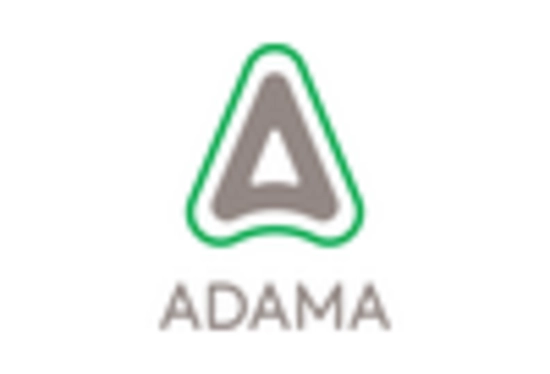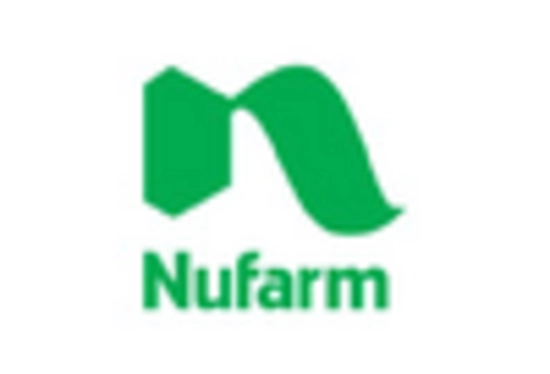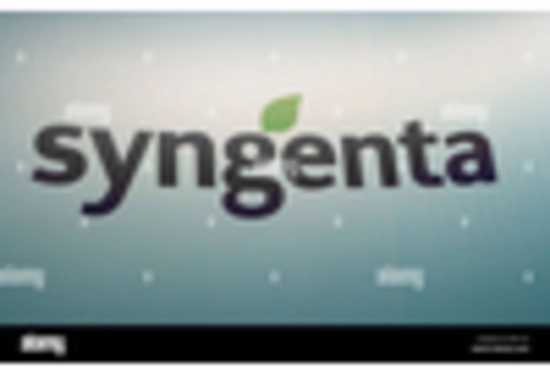Rising Recreational Water Use
The increasing use of recreational water bodies is a notable driver for the Algaecides Market. As more individuals engage in activities such as swimming, fishing, and boating, the demand for clean and safe water environments intensifies. Algal blooms can pose health risks to recreational users, prompting local authorities and private operators to invest in algaecide treatments. Data suggests that recreational water use has grown by over 20% in recent years, leading to heightened awareness of water quality issues. This trend is likely to propel the Algaecides Market forward, as stakeholders seek effective solutions to maintain the aesthetic and health standards of recreational water bodies.
Increasing Water Quality Concerns
The rising awareness regarding water quality issues is a pivotal driver for the Algaecides Market. As water bodies face pollution and eutrophication, the demand for effective algaecides is likely to surge. According to recent data, approximately 40% of lakes in the United States are considered polluted, which has prompted regulatory bodies to enforce stricter water quality standards. This trend is mirrored in various regions, where municipalities and industries are increasingly investing in algaecide solutions to maintain water quality. The Algaecides Market is thus positioned to benefit from this heightened focus on environmental sustainability and public health, as stakeholders seek to mitigate the adverse effects of algal blooms on aquatic ecosystems.
Expansion of Aquaculture Practices
The growth of aquaculture is another significant driver for the Algaecides Market. As the global demand for seafood continues to rise, aquaculture operations are expanding rapidly. This expansion often leads to increased algal growth, necessitating the use of algaecides to ensure optimal conditions for fish farming. Reports indicate that aquaculture production has reached over 100 million tons annually, highlighting the industry's scale. Consequently, the Algaecides Market is likely to see increased demand from aquaculture operators seeking to manage algal populations effectively. The integration of algaecides into aquaculture practices not only enhances fish health but also contributes to sustainable farming practices, aligning with the industry's long-term goals.
Regulatory Pressures for Environmental Protection
Regulatory pressures aimed at environmental protection are increasingly influencing the Algaecides Market. Governments and environmental agencies are implementing stricter regulations regarding water quality and the use of chemicals in aquatic environments. These regulations often necessitate the use of algaecides to control harmful algal blooms and protect aquatic ecosystems. The Algaecides Market is thus responding to these pressures by developing compliant products that meet regulatory standards. As environmental awareness continues to grow, it is anticipated that regulatory frameworks will become more stringent, further driving the demand for effective algaecide solutions. This dynamic creates opportunities for innovation and market expansion within the industry.
Technological Advancements in Algaecide Formulations
Technological advancements in algaecide formulations are transforming the Algaecides Market. Innovations in chemical engineering and biochemistry have led to the development of more effective and environmentally friendly algaecides. These new formulations are designed to target specific algal species while minimizing harm to non-target organisms. The introduction of slow-release formulations and targeted delivery systems has also improved the efficacy of algaecides, making them more appealing to consumers. As a result, the Algaecides Market is witnessing a shift towards products that not only provide immediate results but also offer long-term solutions for algal management. This trend is expected to drive market growth as stakeholders increasingly prioritize sustainable and efficient solutions.


















Leave a Comment